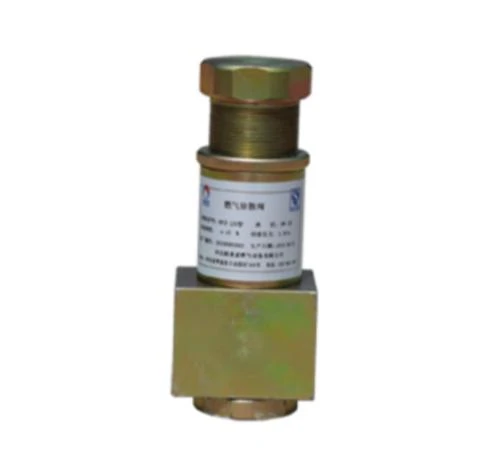
Nov . 17, 2024 12:14
Back to list
معدات الغاز الطبيعي
Natural Gas Equipment A Vital Component of the Energy Sector
Natural gas is one of the world’s most important energy sources, utilized for heating, electricity generation, and as a feedstock for various industrial processes. The equipment associated with the extraction, processing, and distribution of natural gas plays a pivotal role in ensuring that this vital resource is delivered safely and efficiently to consumers. This article delves into the various categories of natural gas equipment, their functions, and their significance in the energy sector.
1. Extraction Equipment
The first step in utilizing natural gas involves extraction from underground reservoirs. This requires specialized equipment designed to drill down to gas deposits, often found in association with oil or deep geological formations. The primary tools used in this phase include rotary drilling rigs, which are large machines equipped with rotating drill bits that bore through rock and soil. These rigs must be robust and equipped with advanced technology to handle the high-pressure environments of natural gas reservoirs.
Additionally, hydraulic fracturing equipment, often referred to as fracking equipment, is crucial in enhancing extraction rates. This process involves injecting high-pressure fluid into the gas-bearing rock formations to create fractures, allowing gas to flow more easily to the wellbore. The equipment used includes high-pressure pumps, mixers for the fracturing fluid, and systems to handle the proppant materials that hold the fractures open after the injection.
2. Processing Equipment
After extraction, natural gas must be processed to remove impurities and separate valuable hydrocarbons. This is where gas processing plants come into the picture. Key equipment in these facilities includes
- Separators Used to separate natural gas from liquids, such as water and oil. - Compressors Essential for increasing the pressure of the gas, allowing it to be transported through pipelines more efficiently. They come in various types, including centrifugal and reciprocating compressors, each suited for specific applications. - Heat Exchangers Employed to regulate temperatures within the plant and recover heat from the process, improving energy efficiency.
.
3. Transportation Equipment
معدات الغاز الطبيعي

Transporting natural gas from extraction and processing sites to consumers requires an extensive network of pipelines and related infrastructure. This includes large diameter steel pipes designed to withstand high pressures, along with valves and fittings to control the flow.
In regions where pipelines are not feasible due to geographical or environmental constraints, alternative methods such as Liquefied Natural Gas (LNG) transport become necessary. LNG facilities include specialized cryogenic tankers that keep natural gas in a liquid state at low temperatures, facilitating easier transport over long distances.
4. Distribution Equipment
Once natural gas reaches distribution points, it is vital to have effective equipment for the final delivery to consumers. This includes
- Regulators Devices that control the pressure of the gas as it enters residential and commercial buildings, ensuring safe and reliable delivery. - Meters Used for measuring consumption, providing both utility companies and consumers with vital data for billing and energy management. - Pipelines and fitting systems That ensure the safe transport of gas from the main supply lines into homes and businesses.
5. Safety Equipment
Given the flammable nature of natural gas, safety equipment is paramount at every stage of handling. This includes explosion-proof equipment in processing plants, gas leak detection systems, and emergency shut-off systems designed to minimize risks and respond quickly to incidents.
Conclusion
Natural gas equipment is critical to the entire value chain of natural gas, from extraction and processing to transportation, distribution, and safety management. Each category of equipment plays a distinct role in ensuring that natural gas is delivered efficiently, safely, and with minimal environmental impact. As global demand for natural gas continues to rise, the development and innovation of this equipment will be essential in meeting energy needs while adhering to sustainability initiatives. The future of natural gas equipment will likely focus on efficiencies, environmental impact, and technological advances that enhance our ability to harness this important resource.
Latest news
-
Safety Valve Spring-Loaded Design Overpressure ProtectionNewsJul.25,2025
-
Precision Voltage Regulator AC5 Accuracy Grade PerformanceNewsJul.25,2025
-
Natural Gas Pressure Regulating Skid Industrial Pipeline ApplicationsNewsJul.25,2025
-
Natural Gas Filter Stainless Steel Mesh Element DesignNewsJul.25,2025
-
Gas Pressure Regulator Valve Direct-Acting Spring-Loaded DesignNewsJul.25,2025
-
Decompression Equipment Multi-Stage Heat Exchange System DesignNewsJul.25,2025

